The Takamoriyama Fort , the predecessor of Naegi Castle, is said to have been built in the mid-1300s of the Kamakura period, by Toyama Clan, who was the head of the area. Naegi Castle, which has been selected as one of the 100 Fine Castles in Japan, is a mountain castle built by Naokado Toyama in Sengoku period by expanding the Takamoriyama fort.
This is a round trip course from JR Nakatsugawa Station to Naegi Castle. One of the nice things about this course is that you can take a leisurely walk along the scenic Kiso River.
Similar article appears here on Nakasendo hiking web site.
The highlight of the course
When you get off at Nakatsugawa Station , there is a monument of the birthplace of Kuri-kinton in front of the station. This area around Nakatsugawa is famous for chestnut sweets such as Kuri-kinton.
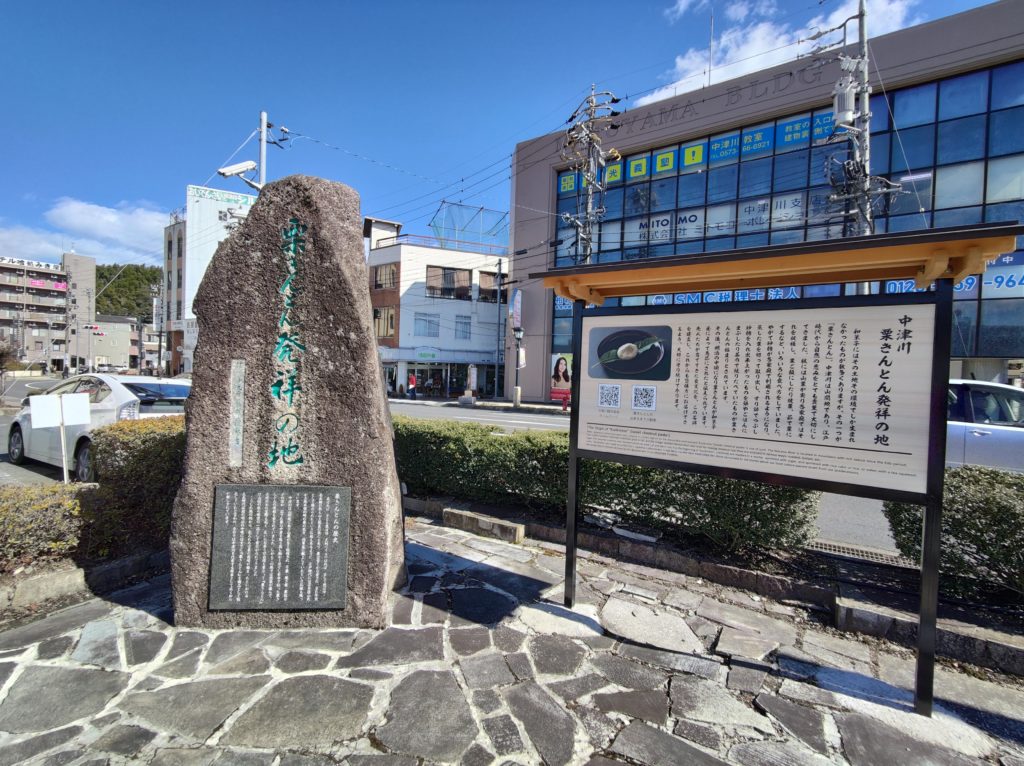
Take a underpass and exit to the west side of the station. Walk down in a rural scenery.
After a while, cross the Kiso River at Tamakura Bridge. Looking downstream, you can see the fort of Naegi Castle on the rocky mountain over the iron bridge of the former Kita Ena Railway.

After crossing the bridge, turn right, go around and enter the road along the Kiso River.

We walk in the rural area of the Seto village for a while. Chestnut trees are planted. Looking back, Mt. Ena.
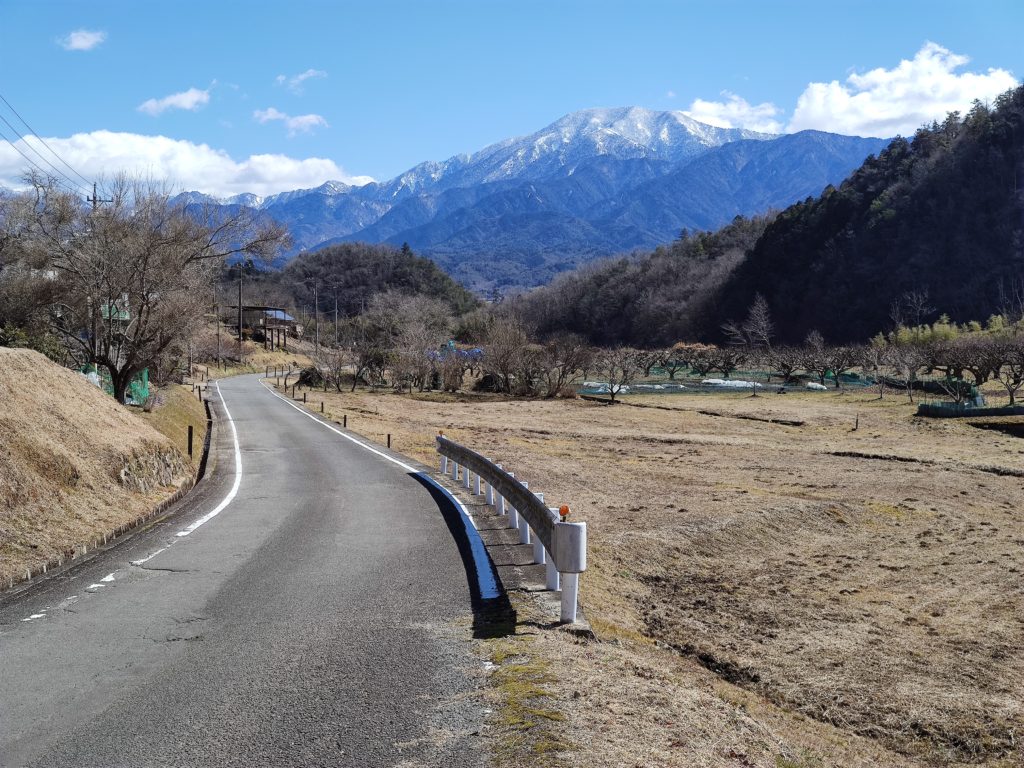
Eventually, at the entrance to a forest, the remains of the Uechi Bridge of the Kita Ena Railway. The black piers are impressive

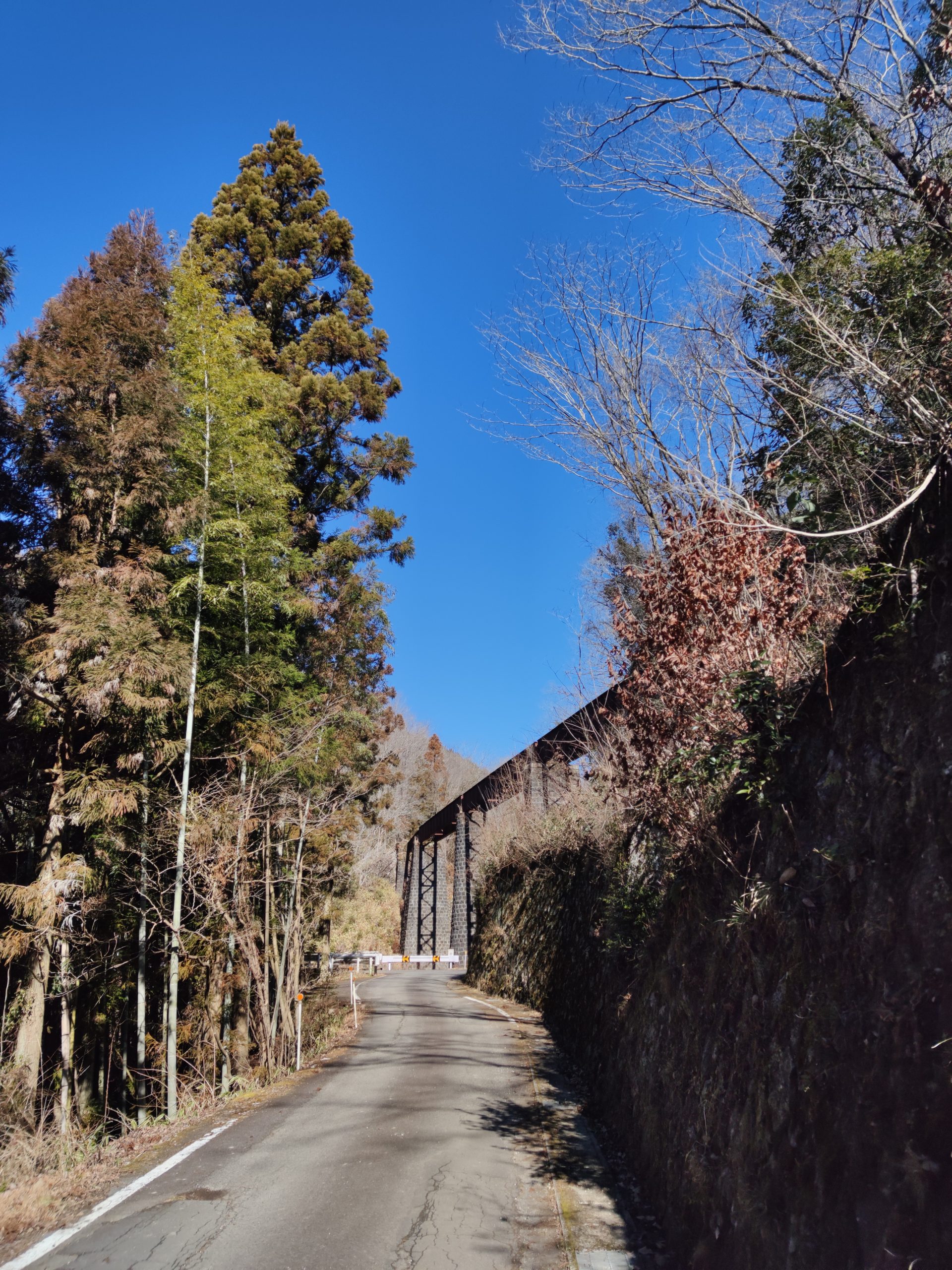
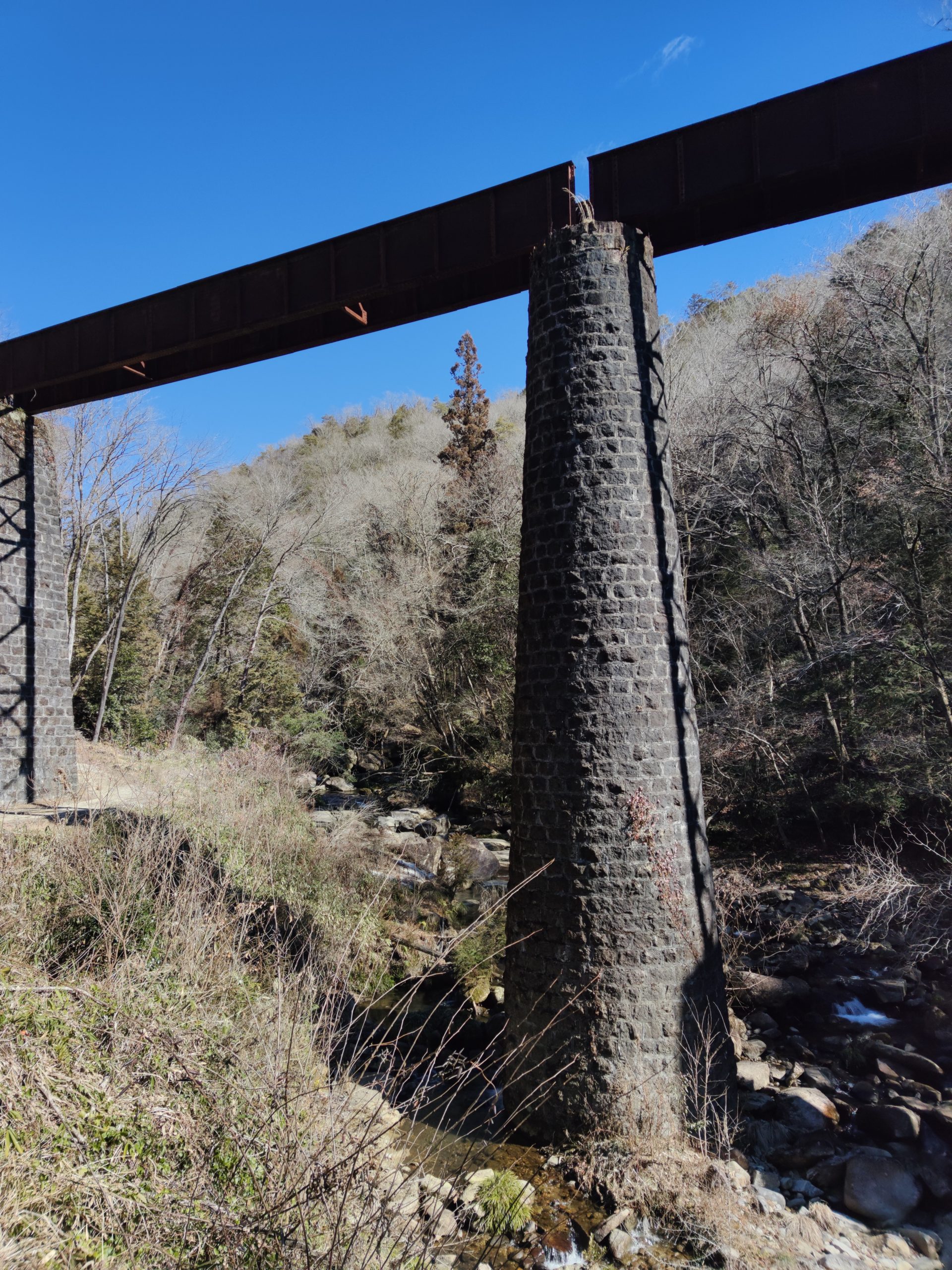
From this pier, there is a walking trail on the right bank of the valley (on the left side when facing upstream), so enter there. This trail may be a part of the side highway leading from Nakatsugawa-juku to Gero.
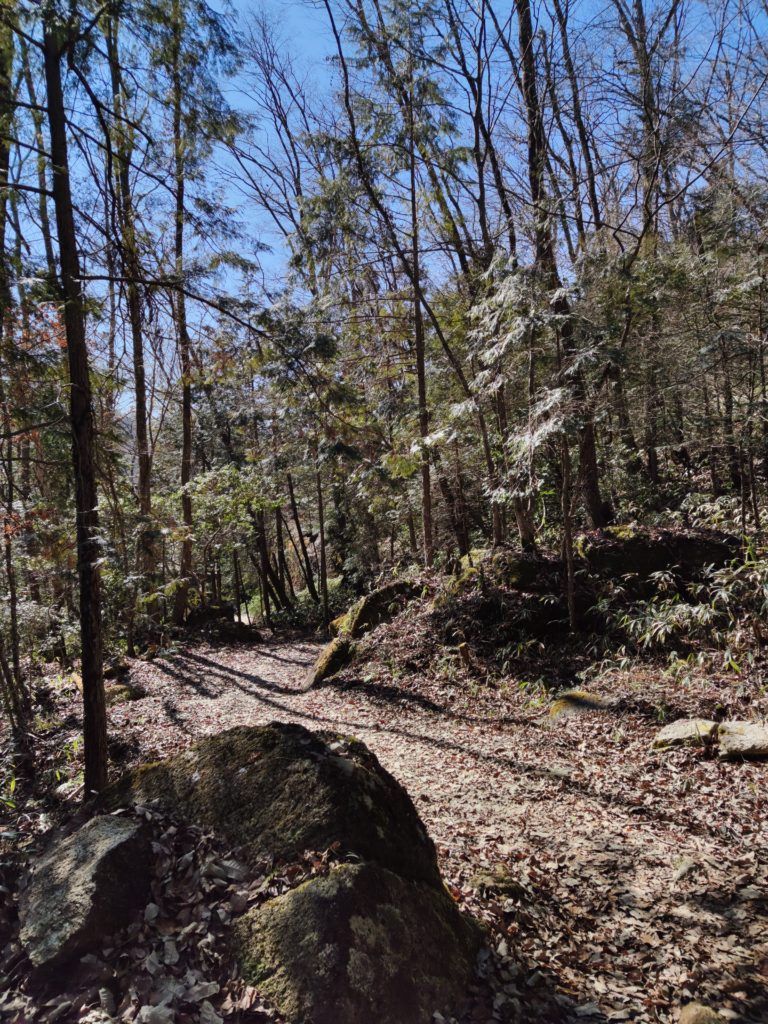
As you go down the trail, you will be surprised to find many large rocks. The mountain around Naegi Castle is made of granitic rock, and it is called Naegi Granite.
There are also some rocks with names. The first one that comes out is the human face rock. You won’t notice it unless you know it. But it might be scary to see it at night.
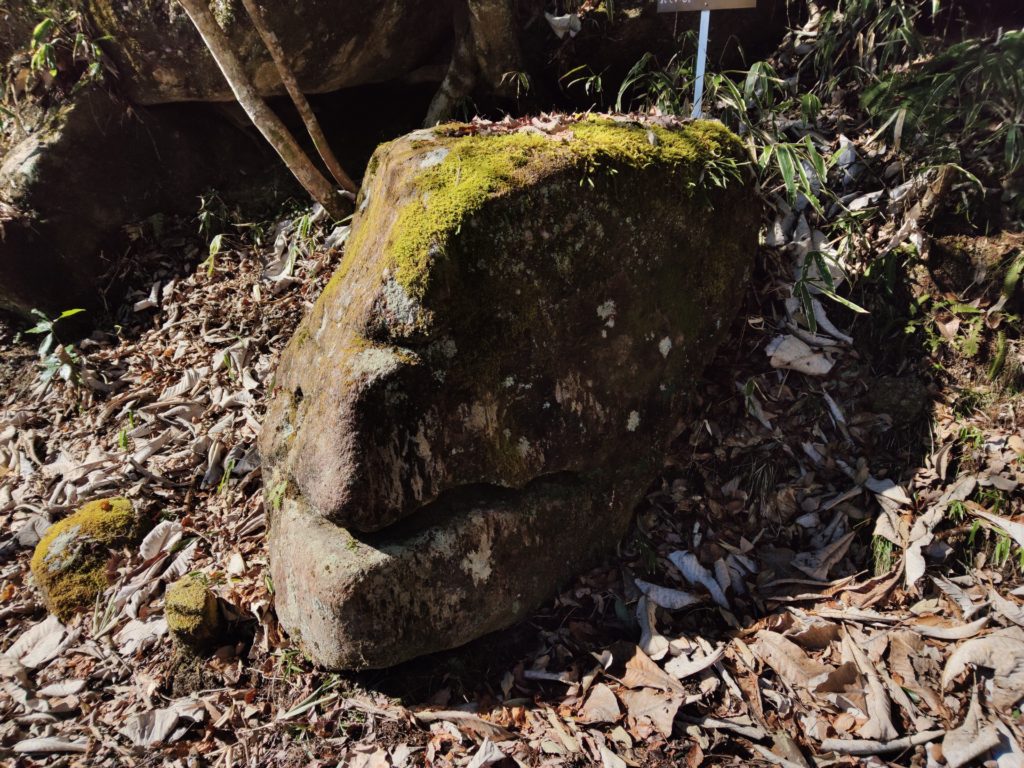
Next is Benkei Rock, which is said to have been cut by Benkei with a naginata (pole sword).
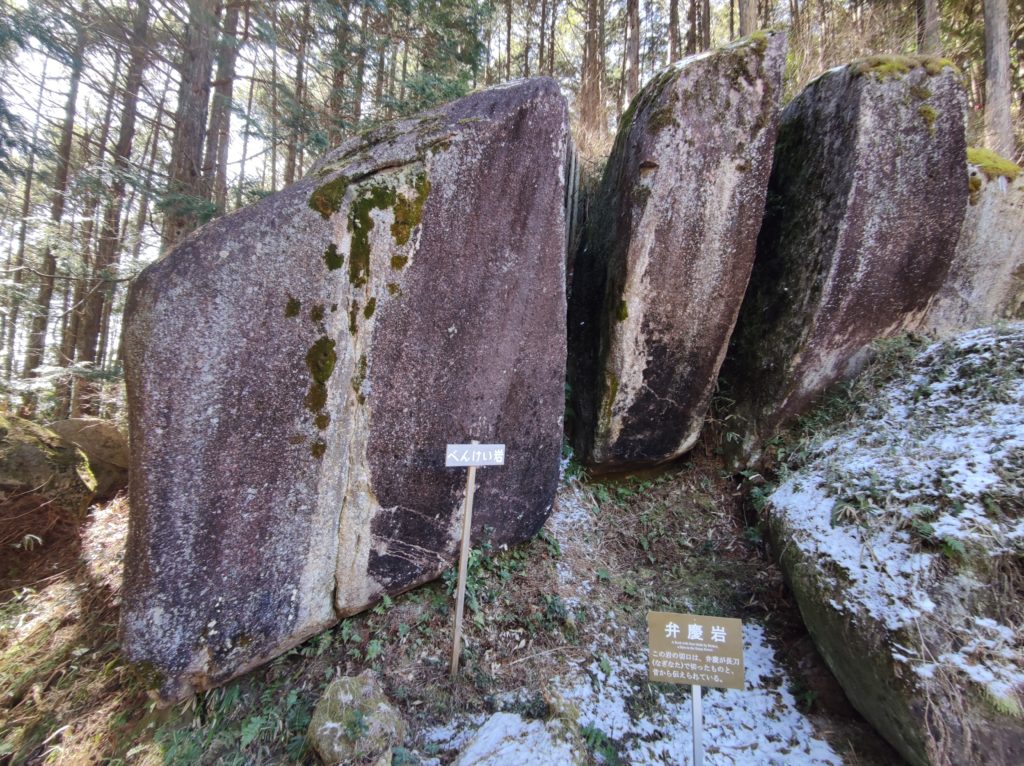
Beside Benkei Rock, there are punched out holes. These are traces of chisels being used to cut out the stone. Probably stones used for the construction of Naegi Castle were collected around here.

The trail will lead to a paved road. Proceed west there to Naegisakura Park. There are no outstanding facilities, but there is an observatory with a poor view. There is a parking lot at Naegisakura Park.
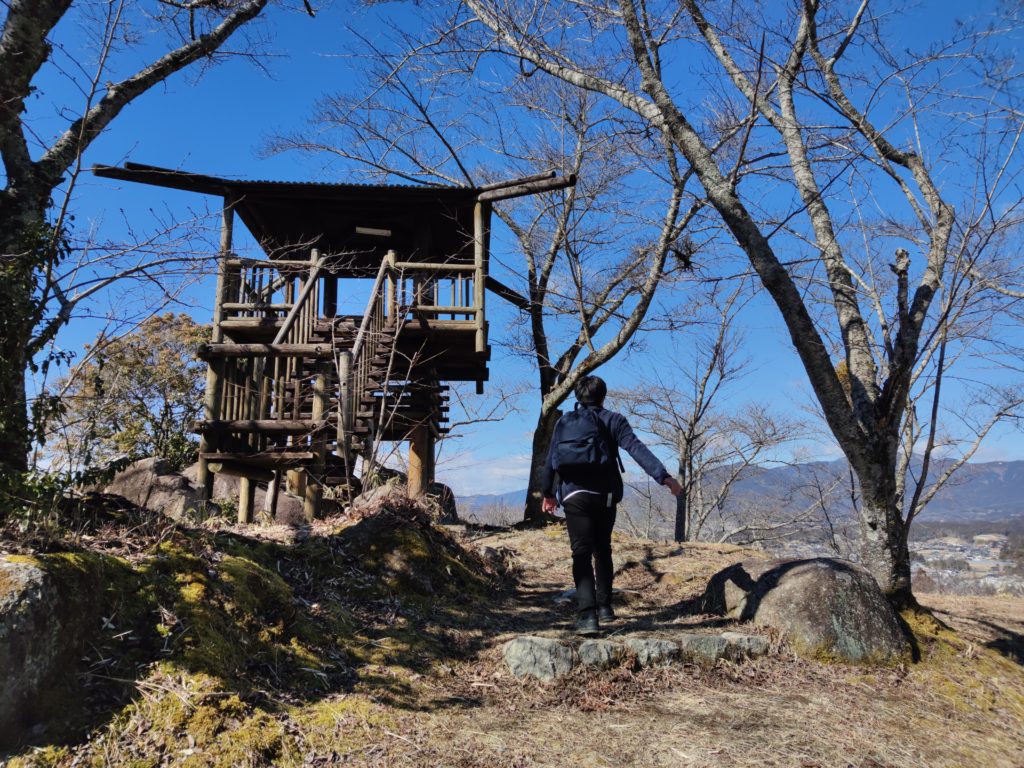
As soon as you start walking from Naegisakura Park, you will enter the territory of Naegi Castle. The ruins of the Naegi Castle’s north gate appears when you pass through the forest.
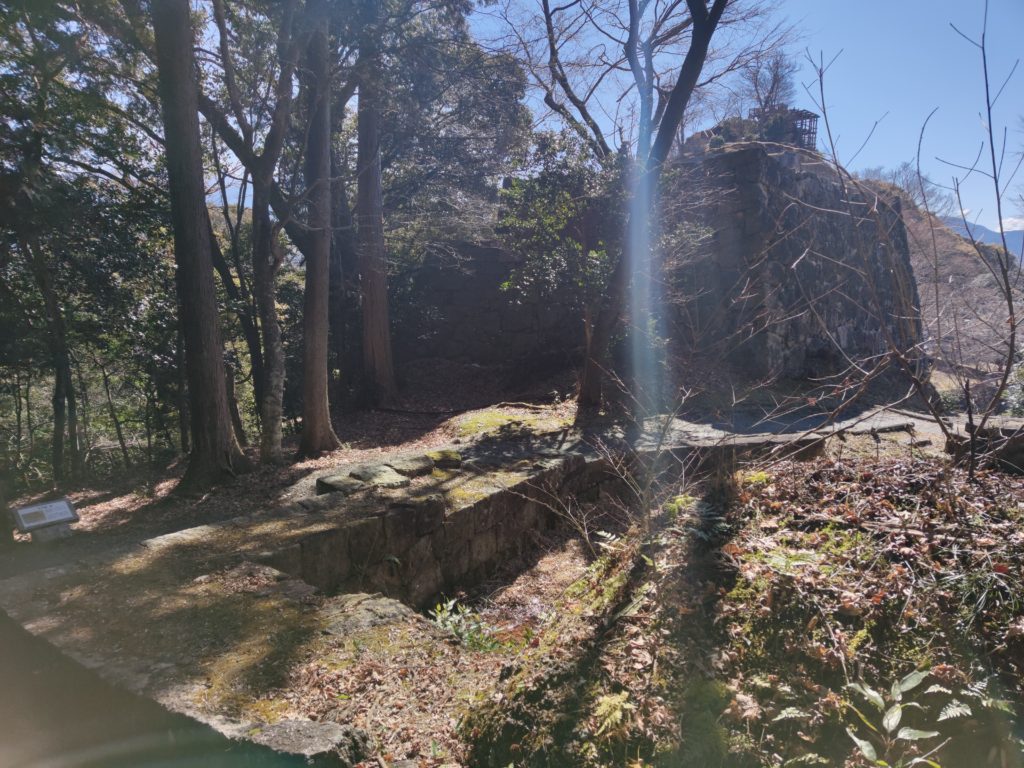
The beautifully piled stone wall behind the north gate is the famous Naegi Castle Oyagura. The whole view of Oyagura can be seen from a slightly higher place. Do you agree if it is called Machu Picchu in Japan?
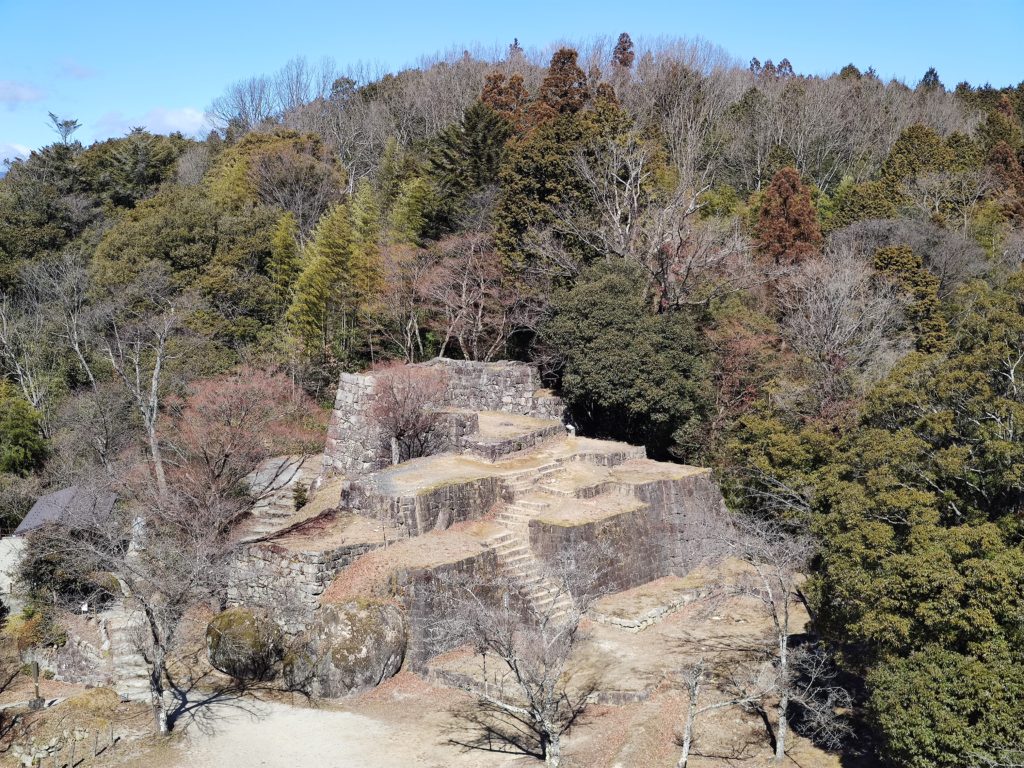
The main castle tower of Naegi Castle was a three-story building made by combining large natural stones and stone walls. The observation turret that is currently being built is said to have been made with reference to the position of the former pillars.

A superb view from the top of the observation tower. The Kiso River is in front of you, and the big snow-capped mountain is Mt. Ontake.

The descent route first passes through the ruins of Takemon gate. The stone wall is also beautiful here.

On the east side of the Castle mountain, a path called ’48th bend’ is said to have been the official entrance to Naegi Castle. The procession of the lord used this steep and winding path when he visited Edo (Tokyo). A lot of stone walls remained on the way. Stone walls were also used for road construction.
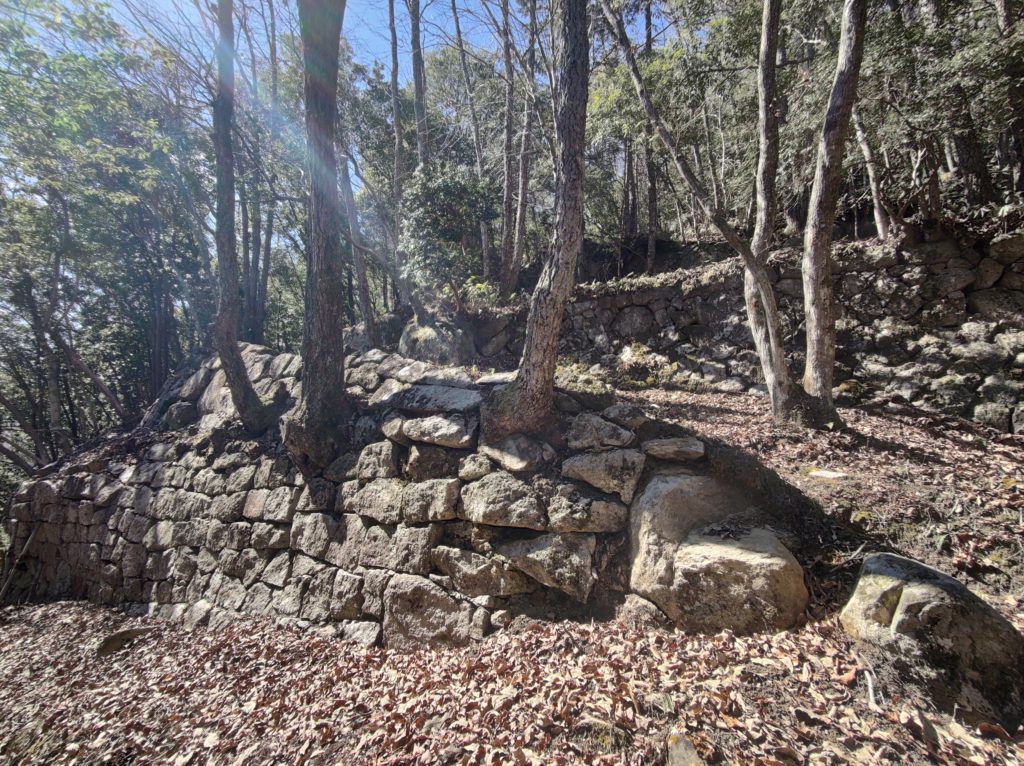
Eventually, you will arrive at the original road, so all you have to do is return to Nakatsugawa Station on the same road.
Meeting places
Nagoya Station, Nakatsugawa Station, etc.
Course time
This course starts from JR Nakatsugawa station and takes about 4 hours. There are mountain roads up and down the Naegi Castle.
Lunch
When you leave Nakatsugawa city, there are few restaurants on the course around Naegi Castle. It is recommended to start early and have a late lunch on the east side of Nakatsugawa Station. There are some famous Soba Noodle Restaurants. Below is Kamo Nanban (hot noodle with duck) at a soba restaurant Wakuri. This is a high-end soba restaurant, and the price is high. But it is so good.
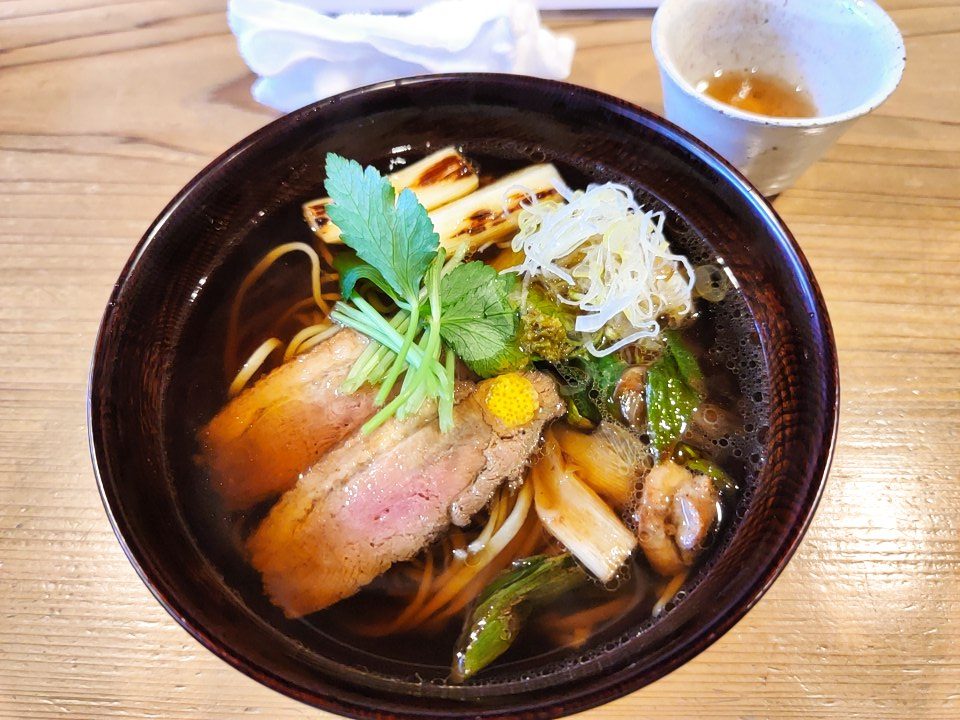
Toilet
There are public toilets around Naegi Castle.
What to bring and what to wear
It’s okay with town wears. Trekking shoes are recommended because there are mountain trails. Sneakers are also fine.
Best period
You can visit there all year round. But you should avoid it when it’s snowing. If you visit in early spring or on a sunny day in winter, the surrounding mountains are covered with snow and are so beautiful.
Highlights of the neighborhood
Nakasendo trail runs through Nakatsugawa. If you are a good-legged person, it is not impossible to walk from Magome-juku to Nakatsugawa-juku and make a round trip to Naegi Castle from Nakatsugawa. Or just take a bus to visit Magome-juku.
If you are interested in this course, please contact us from here.